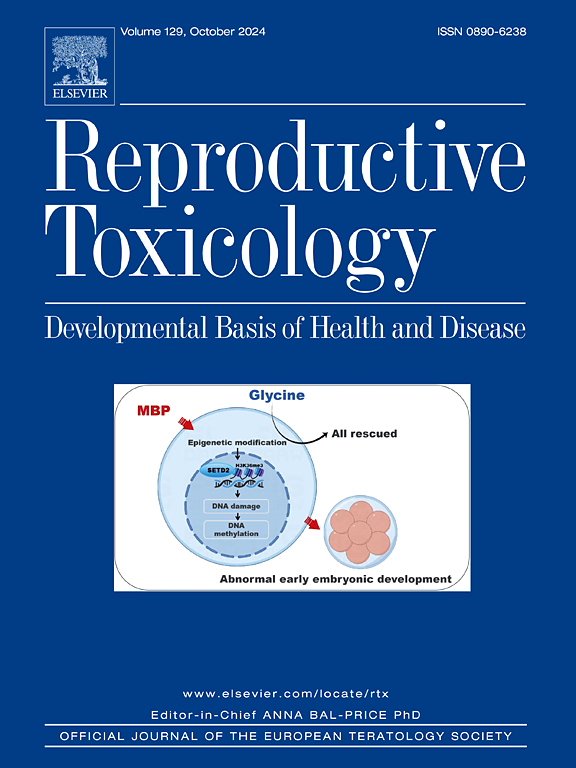In vitro bisphenol A impairs testicular energy metabolism and spermatogenesis through nuclear estrogen receptors activation in zebrafish
IF 3.3
4区 医学
Q2 REPRODUCTIVE BIOLOGY
引用次数: 0
Abstract
This study investigated the effects of bisphenol A (BPA) and the involvement of nuclear estrogen receptors (ESR) on testicular energy metabolism and spermatogenesis in zebrafish. Testes were incubated with DMSO, 10 pM or 10 μM BPA for 6 or 72 h, with some samples pre-incubated with the ESRα/β antagonist ICI 182,780. Gene and protein expressions were analyzed using real-time PCR and Western blot, respectively. Additionally, immunohistochemistry assessed protein expression, and testicular cell surface proportions were analyzed with Ilastik software. Results showed that 10 pM BPA (6 h) increased the expression of lactate dehydrogenase (ldhba), alanine aminotransferase (gpt2), pyruvate carboxylase, estrogen receptor β1 (esr2b), and P-element induced wimpy testis-like. After 72 h, outer dense fiber protein 3b expression decreased through ESRα/β, and BPA reduced spermatid and spermatozoa proportions, also mediated by ESRα/β activation. Moreover, 10 pM BPA decreased pyruvate kinase M1/2a (pkma) expression, whereas 10 μM BPA reduced gpt2 and estrogen-related receptor levels, as well as increased monocarboxylate transporter 4 (mct4), estrogen receptor β2 (esr2b) and synaptonemal complex protein 3 (scp3) expressions. Furthermore, the reduced relative expression of 6-phosphofructo-2-kinase/fructose-2,6-bisphosphatase and ldhba, as well as increased expression of glycogen phosphorylase by 10 μM BPA were dependent on ESRα/β. Additionally, BPA affected cell numbers expressing LDH and PKM via ESRα/β and increased the immunocontent of PKMA, PCNA, and ERK 1/2 phosphorylation. These results indicate that exposure of male fish to environmental concentrations of BPA impairs testicular energy metabolism and spermatogenesis in zebrafish through ESRα/β activation.
求助全文
约1分钟内获得全文
求助全文
来源期刊

Reproductive toxicology
生物-毒理学
CiteScore
6.50
自引率
3.00%
发文量
131
审稿时长
45 days
期刊介绍:
Drawing from a large number of disciplines, Reproductive Toxicology publishes timely, original research on the influence of chemical and physical agents on reproduction. Written by and for obstetricians, pediatricians, embryologists, teratologists, geneticists, toxicologists, andrologists, and others interested in detecting potential reproductive hazards, the journal is a forum for communication among researchers and practitioners. Articles focus on the application of in vitro, animal and clinical research to the practice of clinical medicine.
All aspects of reproduction are within the scope of Reproductive Toxicology, including the formation and maturation of male and female gametes, sexual function, the events surrounding the fusion of gametes and the development of the fertilized ovum, nourishment and transport of the conceptus within the genital tract, implantation, embryogenesis, intrauterine growth, placentation and placental function, parturition, lactation and neonatal survival. Adverse reproductive effects in males will be considered as significant as adverse effects occurring in females. To provide a balanced presentation of approaches, equal emphasis will be given to clinical and animal or in vitro work. Typical end points that will be studied by contributors include infertility, sexual dysfunction, spontaneous abortion, malformations, abnormal histogenesis, stillbirth, intrauterine growth retardation, prematurity, behavioral abnormalities, and perinatal mortality.
 求助内容:
求助内容: 应助结果提醒方式:
应助结果提醒方式:


